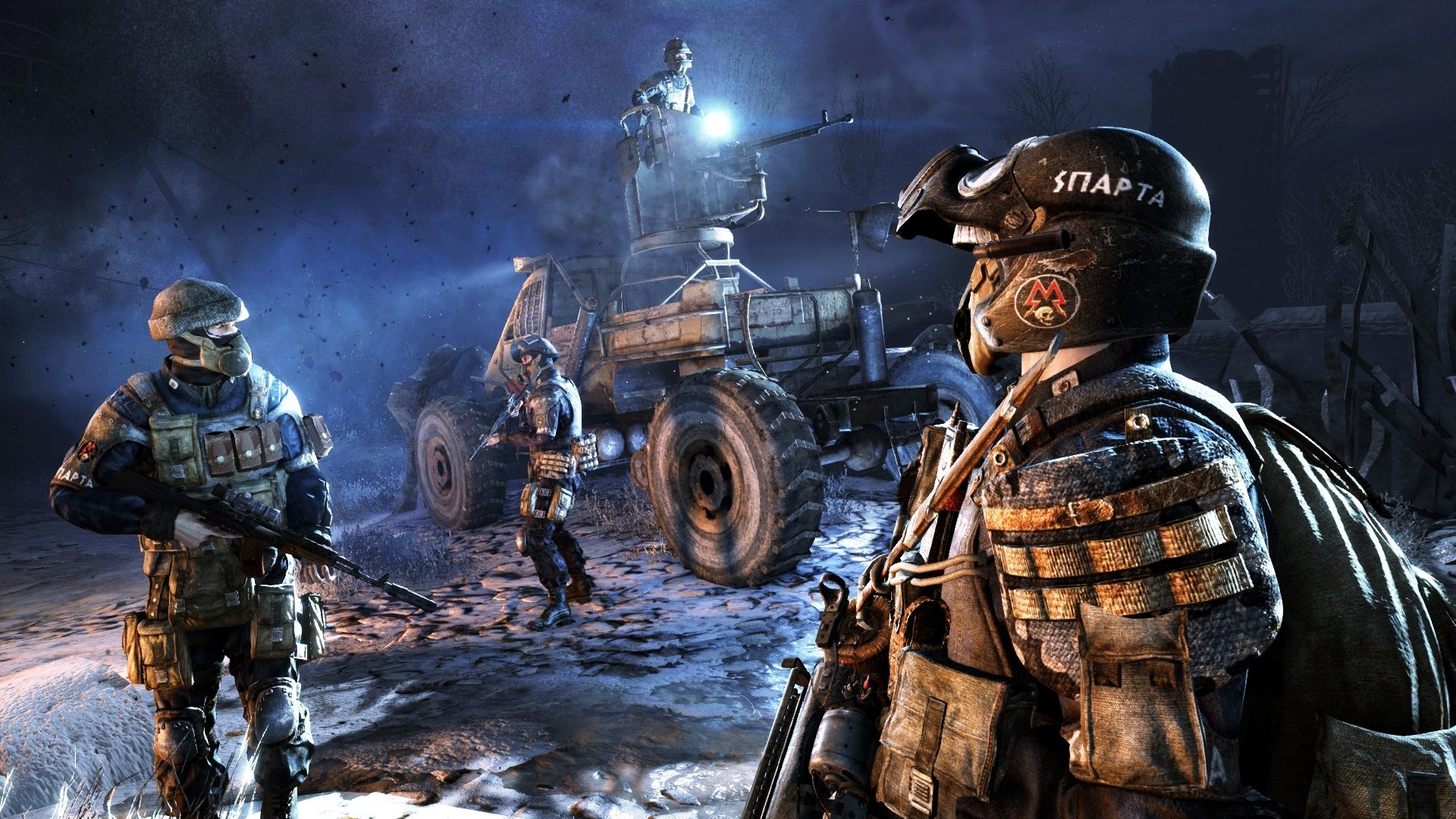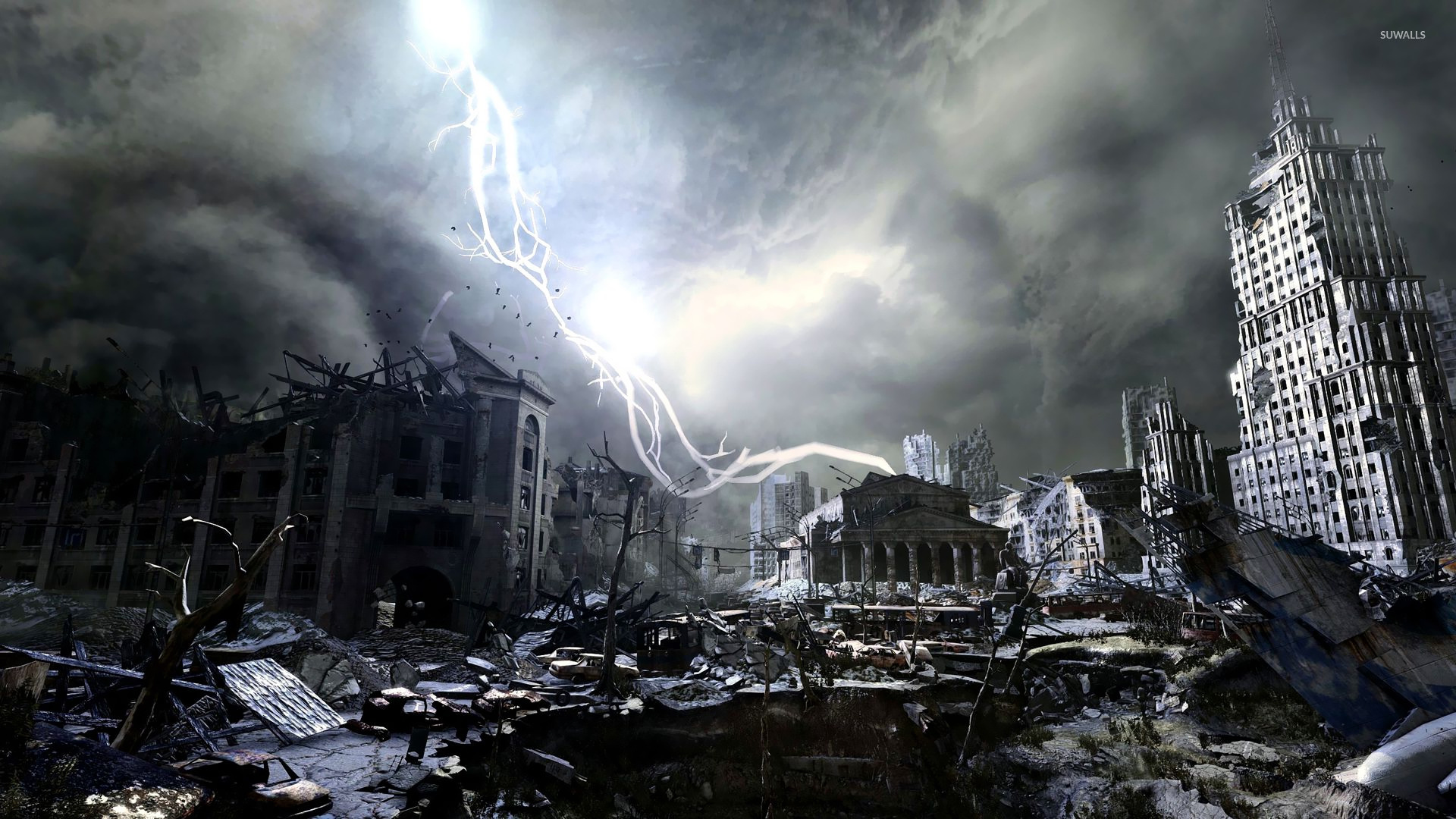

They don't even hear bullets fired with a silencer from a few meters away - this makes using stealth almost too easy at times. From time to time, AI opponents do not even realize that their colleague is missing or they don't react to a lamp being shot directly next to them. One small disappointment: Dead enemies cannot be carried away, and there are even some AI blackouts. To be honest, we almost always preferred stealth in "Last Light" to the stealth system used in " Dishonored ": With the right strategy, whole levels can be cleared without firing a single shot. There are more gameplay options than before: Lamps can be shot out, energy distribution stations can be manipulated and guards can be neutralized from behind or with throwing knives. Thanks to a light meter on our watch and acoustic signals it is much easier than before to estimate Artyom's visibility to his opponents. This does not only have to do with a revamped artificial intelligence but also with expanded feature and indicator sets. While we weren't able to prevent detection in the first part even if we tried hard (due to shards of glass or tin cans), stealth now works a lot better. We consider the revised stealth system to be one of the most important improvements of "Last Light". "Metro: Last Light" does indeed come with a very distinct scenario.

And even the monsters offer a distinct design language which transcends the usual alien-zombie-terrorist enemies found in other shooters. The love or obsession for details of the developers is evident at every corner. The (often rather linearly designed) levels drip with smaller and larger objects. But our favorite was the industry-leading scene lighting which falters neither underground nor on the surface.Īnother thing about the atmosphere is the level of details. Graphics quality is almost always top-notch (with the exception of facial animations), no matter whether we are looking at the textures, the number of polygons or light, fire, particle and shadow effects. Although graphics fetishists might not be too impressed ( "Metro 2033" had been almost as visually stunning as "Last Light"), we are. How exactly does 4A Games manage to create such a consistent, credible game world where many other studios have failed? On one hand, it's all about excellent technology.
#METRO LAST LIGHT BACKGROUNDS SERIES#
Some players may feel reminded of the visual aesthetics of the "Stalker" series - this is no coincidence, since many developers of "Metro 2033" and "Last Light" had been involved with "Stalker" in the past. Only few first-person shooters manage to create a more immersive experience. As in the first part, we slip into the role of the nearly 20-year old Artyom who has to survive in this harsh and hostile environment.Īs expected, "Last Light" inherits one of the strengths of its predecessor: The extremely intense atmosphere. Among others, there are fascists ("Reich") and communists ("Reds"), but the subway tunnels are also populated by numerous horribly mutated creatures which are hostile towards the protagonist as well. This harsh existence without daylight or enough food is made even worse by a number of rivaling factions. After a nuclear war that has laid waste to Russia, the remaining humans try to hide underground. Missile base? "Dark Ones"? Without a fast-paced introductory video describing the preceding events, those who didn't play the first part would not be able to follow the plot.Īs the title implies, "Metro" takes place in the tunnels of Moscow's subway system.

After the conquest of the missile base D6 and the subsequent proceedings, we are supposed to locate the (allegedly) last survivor of the ominous "Dark Ones". Last Light continues the storyline told in its predecessor seamlessly. For the original German review, see here.


 0 kommentar(er)
0 kommentar(er)
